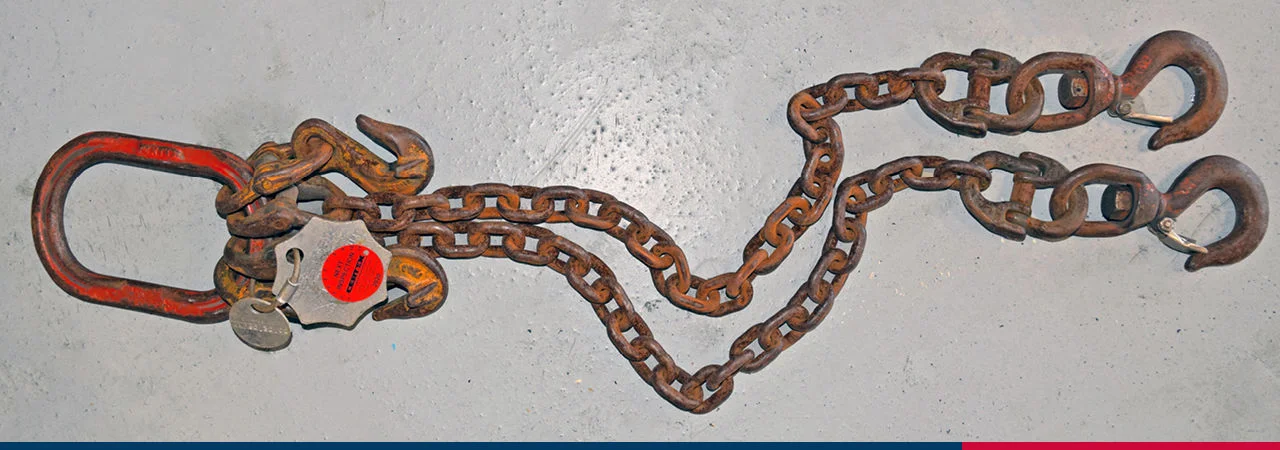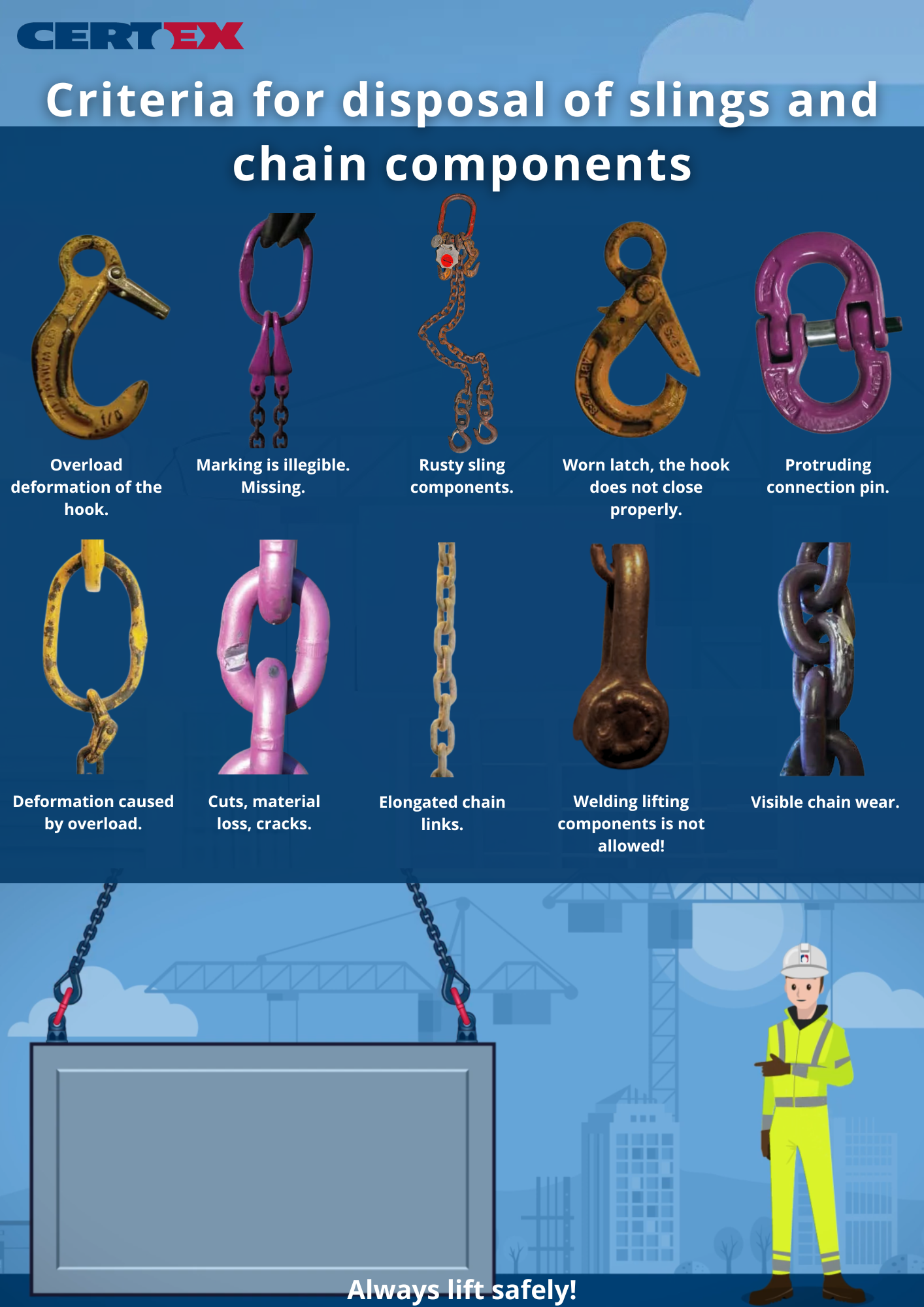
Signs of wear and criteria for withdrawing a sling from service
Chain slings operate in tough conditions and inevitably wear out over time. Even minor damage can create a serious hazard during lifting operations. That is why every user must know when a sling should be immediately withdrawn from service.
❗ Key rejection criteria
A chain sling must not be used if any of the following signs are present:
Chain links and legs
- Cracks, cuts, or deformations of links
- Wear exceeding 10% of the nominal diameter
- Visible deformations (e.g., elongation, twisting)
- Corrosion, pitting, or material loss
Hooks
- Cracks or fatigue fractures (especially in the throat area)
- Hook opening exceeding the permissible tolerance (typically about 5%–10%)
- Malfunctioning safety latch
- Deformation of the hook body or pin
Master and Assmebly links
- Cracks or signs of excessive wear
- Deformation (e.g., opening, flattening)
- Loss of identification markings
Additional components
- Connectors or shorteners bent, loosened, or cracked
- Components not matching documentation (e.g., replaced with non-original parts)
Who can declare a sling unfit for use?
- Operator – in case of visible damage, the sling must be immediately removed from service and reported
- Qualified person – during technical inspections, in line with regulations, can decide whether the sling should be repaired or permanently withdrawn
🛑 Damaged slings must never be repaired “on your own”! Repairs must be carried out by an authorized service provider and properly documented.

Withdrawal documentation
When a sling is rejected, the following steps must be taken:
- A technical report should be issued,
- The fact recorded in the inspection log,
- The sling physically marked as “DO NOT USE” (e.g., with tape, label, or by cutting the hook),
- Secured against further use.

